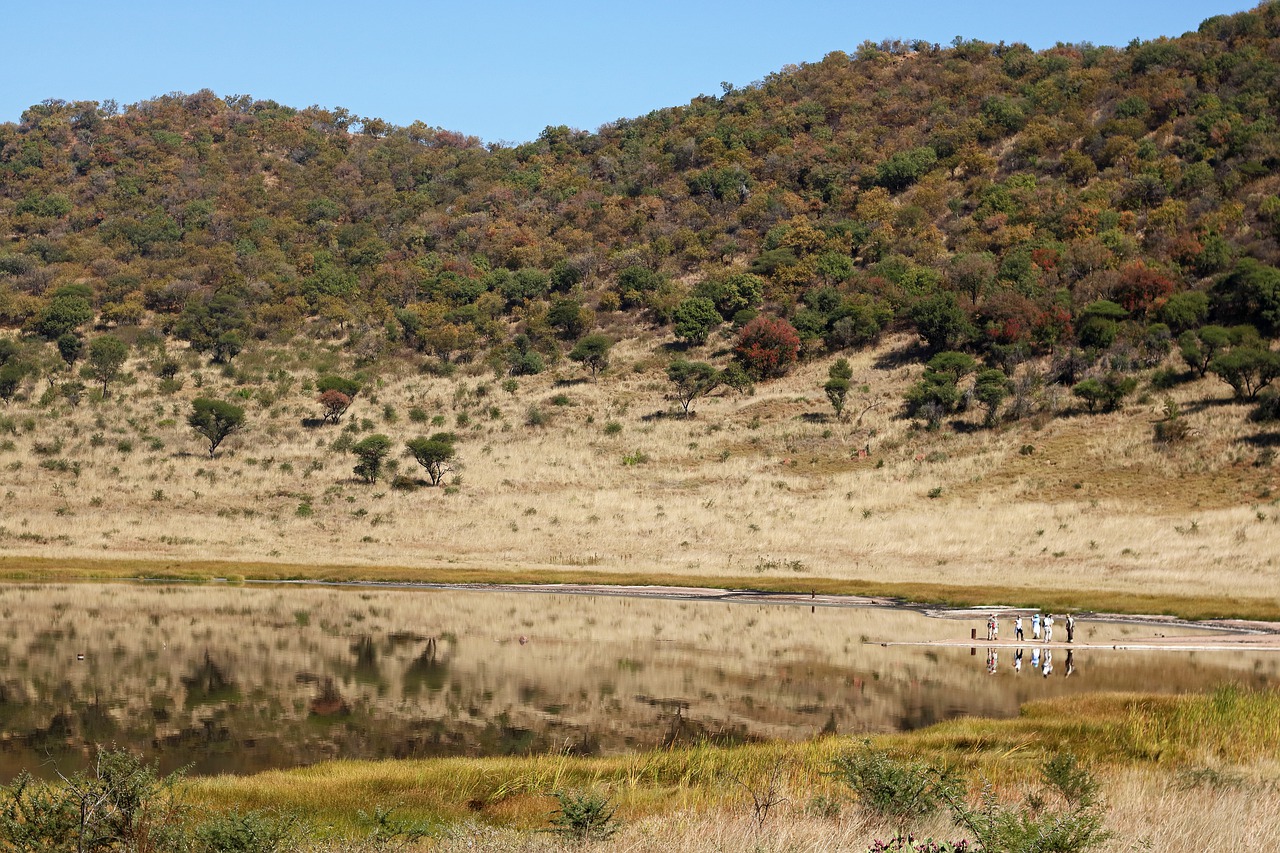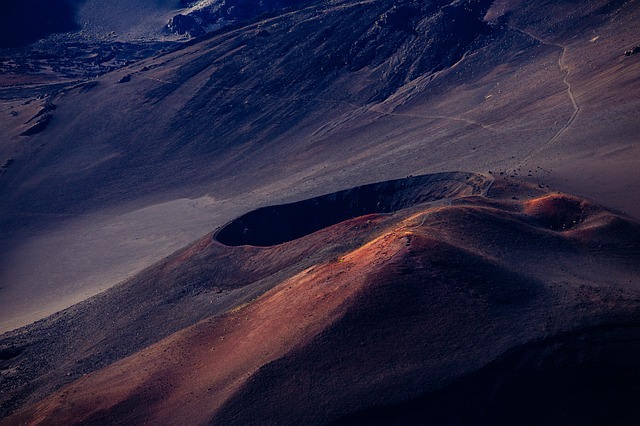When asteroids, comets, or meteors strike Earth or the moon, they leave behind impact craters. At some point in their histories, all of the inner solar system bodies were severely battered by meteoroids. Surface features on the Moon, Mars, and Mercury, among others, bear witness to this assault. Earth, on the other hand, is constantly having impact craters ground down or altered by tectonic forces.
The number of terrestrial impact craters on Earth remains at almost 170. From relatively recent periods to over two billion years ago, their ages span from a few hundred kilometres (186 miles) in diameter to a few tens of metres in diameter.
This list features impact craters that are easy to recognise since they are new and very tiny. The 180-kilometre-diameter Chicxulub crater is an example of a big and ancient impact crater. The infamous impact that created this crater is widely believed to have caused the demise of the dinosaurs about 65 million years ago.
List of 10 Fascinating Impact Craters
1. Kaali Crater
Sometime between the fourth and eighth centuries BC, a meteorite struck Earth, creating the Kaali Crater. A meteorite shattered into pieces and plummeted to Earth in bits while flying at a height of around 5 to 10 km. At its deepest point, the biggest crater is 22 metres deep and 110 metres broad. Eight lesser craters, formed during this bombardment, are located within a one-kilometre radius of the main crater.

After the impact, the Estonian island of Saaremaa’s forest probably burnt to the ground. Numerous folktales and mythologies involving Estonia feature the crater. Saaremaa may have been the fabled Thule island, with the name “Thule” perhaps derived from the Finnish term tule, meaning “of fire” in English.
2. Roter Kamm Crater
The Roter Kamm crater, situated in Namibia’s Namib Desert, measures over 130 metres (400 feet) deep and has a circumference of around 2.5 km (1.6 miles). About 3.7 million years ago, a meteor the size of a big automobile produced it.
The crater’s floor is obscured by sand layers that are at least 100 metres thick, which is 300 feet. The crater makes the Namib Desert look more like Mars than Earth when combined with the orangey-red hues of the desert.
3. Lonar Crater Lake
A meteorite struck the surface of the Lonar Lake in Maharashtra around 50,000 years ago, forming the lake. Approximately 137 metres (449 feet) below the crater rim is the saltwater lake that formed in the basaltic rock formation; its average diameter is 1.2 kilometres (3,900 feet).
In honour of Vishnu’s triumph over the gigantic Lonasur, a temple dedicated to Daityasudan stands at the heart of the Lonar town, among several other dilapidated temples that round the lake. Hikers will enjoy exploring the crater, while nature lovers will appreciate the abundant birdlife in the area.
4. Tenoumer Crater
The Tenoumer Crater is a nearly complete circle with a rim that is 100 metres (330 feet) high and a width of 1.9 kilometres (1.2 miles). The crater may be found in Mauritania’s western Sahara Desert. Modern geologists have long argued about the crater’s origin, with some pointing to a volcano as the most likely culprit.
Upon further inspection, however, it became clear that the meteorite impact had melted the rock that appeared as “lava” in the crater. About 10,000 to 30,000 years ago, this effect happened.
5. Tswaing Crater
Nearly 220,000 years ago, a chondrite, or stony meteorite, with a diameter of 30–50 metres struck the Earth, creating the Tswaing Crater. A tiny lake, replenished by a spring and precipitation, sits in the middle of the crater.

Artefacts from the Stone Age point to the crater being a frequent hunting and salt-gathering location for humans. The indigenous Tswana people refer to the area as Tswaing, meaning “Place of Salt,” whereas the European immigrants dubbed it Zoutpan, meaning “Salt Pan.”
6. Amguid Crater
The Amguid Crater, which formed from a meteor strike some 100,000 years ago, is a juvenile crater. In southern Algeria, in a secluded spot.
With a depth of 30 metres (100 feet) and a circumference of 450 metres (1476 feet), the meteorite impact crater is round. Blocks of sandstones several metres in diameter blanket the top of the rim. Consolidated eolian silts cover the level interior of the crater.
7. Pingualuit Crater
A meteorite with the impact energy of 8,500 atomic bombs, equivalent to the Hiroshima detonation, formed the Pingualuit Crater around 1.4 million years ago. Located 3.44 km (2.14 miles) in diameter, the crater is 400 m (1,300 feet) deep and rises 160 m (520 feet) over the surrounding tundra. Some of the world’s cleanest water is contained in the lake at the base of the crater, which is 270 metres (890 ft) deep.

Because there are no obvious ways for water to enter or leave the lake, precipitation can pool there and evaporate unimpeded. While conducting a meteorological mission in 1943, a US Air Force aircraft discovered the crater. “Where the land rises” is the meaning of Pingualuit in the local Inuit language.
8. Monturaqui Crater
Located in southern Chile, the Monturaqui Crater lies close to the Salar de Atacama. About 460 metres (1,509 feet) in diameter and 34 metres (100 feet) depth are the current measurements of the crater. Roughly one million years ago, there was an impact. Due to the extremely dry climate of the region, the crater may still be made out.
The size and shape of the Monturaqui crater are strikingly comparable to those of the Mars crater Bonneville, which the Spirit rover visited in 2004. The craters were both created in a volcanic setting, they are shallow, and the rocks that were ejected around the rim of the craters are of comparable size.
9. Barringer Crater
Of all the impact craters on Earth, Barringer Crater is the most famous and well-preserved. The crater was named for the man who initially proposed the idea that a meteorite impact created it: Daniel Barringer. The crater, which goes by several names (including Meteor Crater and Arizona Crater), is still privately held by his family.
The crater is located close to Flagstaff, Arizona, and it has a circumference of over 1,200 metres (4,000 feet), a depth of around 170 metres (570 feet), and an average rim height 45 metres higher than the surrounding plain.
An iron meteorite, about fifty metres (54 yards) broad and several hundred thousand tonnes in weight crashed into the Earth some 40,000 years ago, creating the Barringer Crater. The asteroid reportedly hit at 12.8 kps (28,600 mph), according to recent studies.
10. Wolfe Creek Crater
A meteorite struck the planet 300,000 years ago, creating the Wolfe Creek Crater in Australia. A crater around 875 metres (2870 feet) in diameter was left behind by the 50,000, which weighed over 50,000 tonnes.

The depth of the resulting crater was likely around 120 metres. The rim stands 25 metres above the level desert terrain that surrounds it, and the crater floor is now 60 metres (200 feet) below it, a result of the wind progressively filling it with sand over the subsequent 300,000 years.
The area around the crater is home to a few iron meteorites. Although the Aboriginal people have known about the crater for thousands of years, it was only in 1947 during an aerial survey that it was found.
Read more: Dhaka to Cox’s Bazar Bus: Timing, Class, Affordable Prices, Luxurious Amenities




